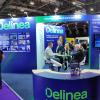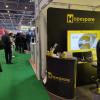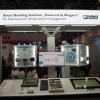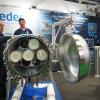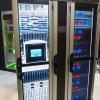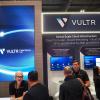Inside Big Data & AI World 2025: The Future of AI Unfolds
Finally, I Made It Here!
I've covered AI and big data for years, but there’s something different about being in the middle of it all.
Stepping into Inside Big Data & AI World 2025 ExCeL London, I could feel the shift—the kind of buzz that tells you something big is happening.
Conversations whirled around me, panels overflowed with eager minds, and tech giants were showcasing the future as if it had already arrived.
And yet, in the back of my mind, a question lingered: Are we still in control of AI, or is it starting to run the show?
Lenovo: A Bold Leap into AI-Driven Cooling
I will be honest—I expected Lenovo to show off powerful new servers and high-speed computing. But what I didn’t expect was to have my mind blown by a cooling system. Yes, cooling.
Their ThinkSystem N1380 Neptune chassis is fully liquid-cooled, removing the need for traditional air conditioning.
That is 100KW+ server racks running without the usual power-hungry cooling fans. It sounds small, but if you’ve ever been inside a data centre, you know that keeping those machines from melting down is a constant battle.
It made me pause. AI is hungry for power, and as we scale, our ability to keep up with its energy demands will define whether we can continue advancing.
Lenovo isn’t just offering a solution—it’s redesigning the battlefield.
With their ThinkSystem SC777 V4 Neptune, built to handle NVIDIA Blackwell platform, we are talking about AI models more complex than anything we have seen before.
At what point do these systems start building themselves? And if they do—what role is left for us?
Cybersecurity: AI’s Most Crucial Battlefield
There is something unsettling about AI vs AI. That is where cybersecurity is headed. No longer is it about blocking threats after they appear—now AI is predicting and eliminating cyberattacks before they even happen.
I spoke with an expert who put it bluntly: “We are in an arms race. AI is not just defending systems—it’s attacking them too.”
And that’s the part that really got me thinking. If cybercriminals are training AI to outsmart security measures, then companies have no choice but to fight fire with fire. But what happens when AI becomes too good at its job?
When humans no longer fully understand the decisions it makes? Are we still in charge, or are we just hoping our AI is smarter than theirs?
GitHub and the AI Revolution for Developers
I wandered over to GitHub’s booth, expecting to see developer tools. What I saw instead felt like the beginning of an entirely new way to code.
Their AI-powered coding assistant doesn’t just suggest improvements. It understands the project, anticipates solutions, and explains its choices in plain English.
That is exciting and terrifying at the same time.
On one hand, it means faster, smarter development.
On the other hand, I kept hearing the same concern: What happens when junior devs never learn to code because AI does all the thinking for them?
There is a fine line between assistance and dependence. Are we creating better programmers, or just making it easier for AI to replace them?
New Relic: The Silent Guardian of Web Applications
Let us be real—nobody notices system monitoring until something goes horribly wrong. That is why companies like New Relic are building AI-powered diagnostics that catch failures before they happen.
It is fascinating: AI is not just running applications—it’s watching over them, learning their behaviour, and quietly preventing disasters. That is great... unless, of course, it makes a bad call. How much trust should we put into systems that monitor themselves?
And that brings me to a broader question: are we becoming too comfortable handing off responsibility to AI?
Park Place and the Future of Data Transmission
I'll admit, I have never spent much time thinking about server cabling. But as I listened to Park Place Technologies talk about their high-speed data transmission, something clicked.
AI is only as fast as the data it can process. If you want to push AI further, you need the infrastructure to match.
This isn’t just about speed—it’s about whether AI can make real-time decisions without delay.
Think about self-driving cars, AI-assisted surgeries, stock market automation. Every fraction of a second matters.
The better our data highways, the more seamlessly AI can integrate into everyday life.
Are we ready for that level of AI decision-making? Because the tech is coming—whether we’re prepared or not.
Where Do We Go From Here?
By the end of Big Data & AI World 2025, one thing was clear—AI is accelerating at a pace few could have predicted.
Every discussion, every demonstration pointed to a future where AI is no longer an assistant but a core decision-maker.
Walking through the event, I kept wondering: Are we truly shaping AI, or is it shaping the world for us?
AI is no longer confined to automation. It is embedded in business strategy, infrastructure, and decision-making on a level that forces us to rethink traditional roles. The technologies showcased here were not just about improving processes—they were about redefining how industries function.
This raises an uncomfortable but necessary question: Are we still guiding AI’s direction, or has it already set a course we are merely following?
For those who could not attend, more insights and exclusive discussions are coming soon on Prime Economist.
Stay connected for the latest developments in AI and big data.

